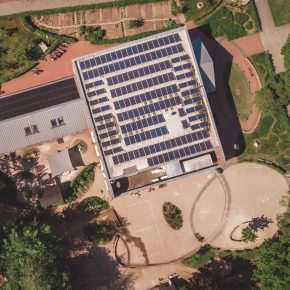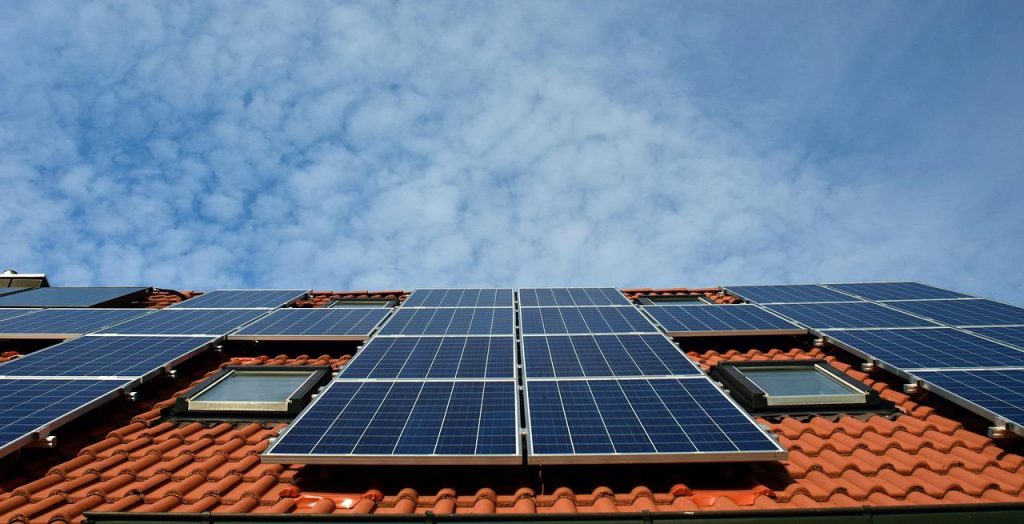
GUEST ARTICLE: The Future of Carbon-Neutral Buildings – Trends and Predictions
As the world grapples with the realities of climate change, the construction industry has a significant role to play in reducing carbon emissions. In the UK, buildings contribute to 33% of the greenhouse gas (GHG) emissions and 40% of the global energy consumption. This article, from Paul Bullard, Product Director at SFG20, explores the concept of carbon-neutral buildings, current trends, future predictions, and the role of sustainable building practices in achieving carbon neutrality…
Understanding Carbon-Neutral Buildings
In a carbon-neutral building, energy efficiency is paramount. Architects and engineers use principles such as passive solar design, natural ventilation, and high-efficiency insulation.
In addition to energy-efficient design, carbon-neutral buildings also use renewable energy technologies to generate electricity. This can include solar panels, wind turbines, and in some cases, geothermal systems. The electricity generated by these systems can be used to power the building’s lighting, heating, and cooling systems, as well as any appliances or equipment in the building.
Current State of Carbon Emissions in the Construction Industry
In the UK, the construction industry is a significant contributor to carbon emissions. The embodied carbon of a building, which includes the carbon emissions associated with the extraction, production, and transportation of construction materials, as well as the carbon emissions from the construction process itself, can be equivalent to 20 years’ worth of its operational carbon emissions.
Trends in Carbon-Neutral Buildings
The drive towards carbon-neutral buildings is gaining momentum, with several key trends shaping the future of the built environment. These trends reflect a growing commitment to sustainability, energy efficiency, and technological innovation.
1) Renewable energy sources
Solar panels and wind turbines are becoming a common sight on buildings across the UK. As the cost of these technologies continues to fall, they offer long-term cost savings, making them an increasingly attractive option for building owners and operators.

2) Energy-efficient design
Architects and engineers are using principles such as passive solar design and high-efficiency HVAC systems to minimise energy consumption. Passive solar design takes advantage of the sun’s energy for heating and cooling, while high-efficiency HVAC systems use less energy to provide the same level of comfort.
3) Sustainable building materials
These materials, which include recycled or reclaimed materials, can significantly reduce a building’s embodied carbon – the carbon emissions associated with the production, transport, and disposal of building materials.
By choosing sustainable materials, builders can reduce the environmental impact of their projects while often also improving the performance and aesthetics of their buildings.
4) Smart technology integration
Smart thermostats, energy management systems, and other technologies can optimise a building’s heating, cooling, and lighting systems, further reducing energy consumption. These technologies can also improve comfort and convenience for building occupants.
Future Predictions
The landscape of the UK’s built environment is set to undergo a significant transformation. The drive towards carbon neutrality is expected to accelerate, spurred by technological advancements, evolving government policies, and heightened public awareness of climate change.
The government’s Ten Point Plan for a Green Industrial Revolution and Net Zero Strategy provides a roadmap for this transition, outlining strategies for improving energy efficiency, promoting low-carbon heating solutions, and encouraging the construction of energy-efficient new homes.
Moreover, the decarbonisation of the UK’s electricity grid and the development of a low-carbon hydrogen sector are set to make it easier for buildings to reduce their carbon footprint.
At the same time, investments in carbon capture usage and storage (CCUS) technologies could further help offset emissions from buildings and industrial processes.
Beyond government initiatives, we anticipate a growing number of businesses and individuals investing in carbon-neutral buildings. As energy prices continue to rise, buildings that generate their own green electricity can offer a financially attractive proposition.
The public sector is leading by example, with the government committed to achieving net-zero emissions from its operations by 2050. This sets a precedent for the private sector, demonstrating the feasibility and benefits of carbon-neutral buildings.
Latest news

21st February 2025
ASSA ABLOY EMEIA: Save valuable time and money with a seamless switch to programmable digital keys
In 2025, access management can be a whole lot easier. By making access part of their digital processes, businesses can put time-consuming key management and the cost of changing the locks firmly behind them. Making this switch is a lot easier than many people think, as ASSA ABLOY explains here…
Posted in Access Control & Door Entry Systems, Architectural Ironmongery, Articles, Building Industry News, Building Products & Structures, Building Services, Doors, Facility Management & Building Services, Health & Safety, Information Technology, Innovations & New Products, Retrofit & Renovation, Security and Fire Protection
21st February 2025
Showersave supports industry leaders in addressing Part L and Part G regulations
Showersave has sponsored and participated in a recent Building Insights LIVE roundtable on ‘Water & Energy Saving Innovations in New Build Housing’.
Posted in Articles, Bathrooms & Toilets, Bathrooms, Bedrooms & Washrooms, Building Associations & Institutes, Building Industry Events, Building Industry News, Building Products & Structures, Building Regulations & Accreditations, Building Services, Exhibitions and Conferences, Interiors, Pipes & Fittings, Plumbing, Retrofit & Renovation, Sustainability & Energy Efficiency
21st February 2025
GEZE: The importance of Specifying High Quality Door Closers on Fire Doors
Andy Howland, Sales & Marketing Director at GEZE UK, discusses why specifying high quality door closers on fire doors is important…
Posted in Access Control & Door Entry Systems, Accessibility, Architectural Ironmongery, Articles, Building Industry News, Building Products & Structures, Building Regulations & Accreditations, Building Services, Doors, Facility Management & Building Services, Health & Safety, Posts, Restoration & Refurbishment, Retrofit & Renovation, Security and Fire Protection
21st February 2025
Insight Data achieves ISO9001 recertification with zero non-conformities
Leading industry data specialist, Insight Data, has successfully achieved the prestigious recertification for ISO9001 with zero non-conformities for the fourth consecutive year.
Posted in Articles, Building Industry News, Building Regulations & Accreditations, Building Services, Information Technology, Research & Materials Testing
 Sign up:
Sign up: